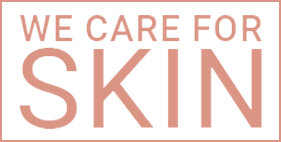The concept of acne face map has been gaining popularity lately, especially on social media, beauty blogs, and even online lifestyle magazines. This is based on the ancient Chinese and Indian or ayurvedic theories that link the location of pimples on your face to internal problems.
Acne face mapping divides the face into sections and relates the appearance of pimples in these areas to specific organs. For example, breakouts in the nose area are supposedly linked to heart and blood pressure problems. Pimples appearing on the forehead, on the other hand, are said to be caused by liver and digestive problems. And pimples arising on the cheeks and the T-zone are said to be due to stomach and liver problems, respectively.
The Truth About Acne Face Map
Although ancient and traditional medicines are still widely used today - with a considerable number of them to be scientifically proven effective, some theories such as the acne face map remains a pseudoscience. As of today, there is no scientific evidence that backs the claim of acne face mapping. Even experts in the field dermatology agree that there is little to no truth in the concept of an acne face map.
The only exception is the claim that pimples appearing on the chin or jawline area are caused by hormonal imbalance. Numerous studies have found that hormonal acne tends to concentrate along the chin and jaw lines.
Acne Prone Areas on the Face: How to Avoid and Treat Them?
Pimples are caused by a variety of factors including overproduction of sebum, hyperkeratinization of the skin cells, bacterial infection, and inflammation. These factors can be influenced by both internal and external factors such as genetics, stress, pollution, medications, friction, cosmetic products, hygiene, and lifestyle, among others.
Given this wide range of causative factors, pimples can also present either as mild or severe and affect various areas of the face.
- Cheeks
The cheeks are the most common areas for pimples to pop out. From friction to dirty pillows and frequent touching, there are a lot that can trigger a breakout on the cheeks. Bacteria found on phone screens can also cause a breakout especially for people who often take phone calls.
Changing beddings frequently at least once a week, sanitizing your phone screens, and avoiding the urge to touch your face, can greatly help in preventing acne breakouts on the cheeks. Frequently washing makeup brushes and sponges is also recommended to prevent build up and proliferation of acne-causing bacteria.
- Hairline
A lot of hair products have ingredients that can be comedogenic or clog the pores. These ingredients can trickle to the hairline area and trigger pimples to break out. They can also come in contact with the skin while applying the products like hairsprays.
If stopping the use of certain hair products to avoid the occurrence of pimples is not possible, the best that you can do is to ensure that the products are cleansed from your hair as often as possible. Consider using clarifying shampoo to break down the components of the hair products especially the oil-based ones. Make sure to also cover your face when applying hairsprays.
- Brows
Similar to hair products, some brow gels and pencils can also clog the pores in the brow area. For clogged pores, facial wash and cleansers that have exfoliating and unclogging properties such as BHA and salicylic acid are recommended.
Other causes for breakouts on the eyebrow area can be due to threading, plucking, or tweezing.
- T-Zone (Forehead and Nose)
The forehead and nose area also called the T-zone is a part of the face with one of the most oil glands present. This is also the reason this area is very prone to whiteheads, blackheads, and acne.
As mentioned, overproduction of sebum is one of the causes of acne, and a number of things can cause this overproduction like stress, lack of good sleep, and hormonal imbalance.
Using products that combat oiliness and oil-free ones is recommended. However, it is important to choose products that will work with your skin type. Taking supplements to fight the effects of stress such as vitamins C and E are also beneficial. As with sleep, having a restful and good quality one is more important than which time of the day you need to sleep.
- Chin and Jawline
Fluctuations in hormones is considered one of the main culprits of acne in the chin and jawline areas. Hormonal imbalances usually occur in pregnant women, teenagers, and people with conditions such as polycystic ovary syndrome or PCOS. Usually, the spike in androgen levels causes the overstimulation of oil glands, and as a result, sebum clogs the pores and eventually causes acne.
In cases like this, it is very important to talk with your doctor or dermatologist on which approach you should take. On top of medications to control the hormone levels, your dermatologist may also prescribe medications that directly target the acne such as isotretinoin.
Isotretinoin works by reducing sebum production, prevents the growth of acne-causing bacteria, reducing inflammation, and normalizing skin hyperkeratinization - all of which are key factors in the development of acne. It is best taken orally but there are only a few FDA approved brands available in the country. One of them is Acnetrex, which is available in 10 mg and 20 mg capsules.
Despite being highly effective in treating acne, it should be taken with caution and under the supervision of a licensed dermatologist. It is also not recommended for pregnant and lactating women as it can cause serious side effects.
References:
-
Cohn, H. (2022). Are Acne Face Maps a Help or a Hoax? McGill University. Retrieved from https://www.mcgill.ca/oss/article/pseudoscience/are-acne-face-maps-help-or-hoax
-
Elsaie M. L. (2016). Hormonal treatment of acne vulgaris: an update. Clinical, Cosmetic and Investigational Dermatology, 9, 241–248. https://doi.org/10.2147/CCID.S114830
-
Rabach, M. (2020). What That Acne Spot on Your Face Means, According to Science. Healthline. Retrieved from https://www.healthline.com/health/beauty-skin- care/pimple-acne-face-map


